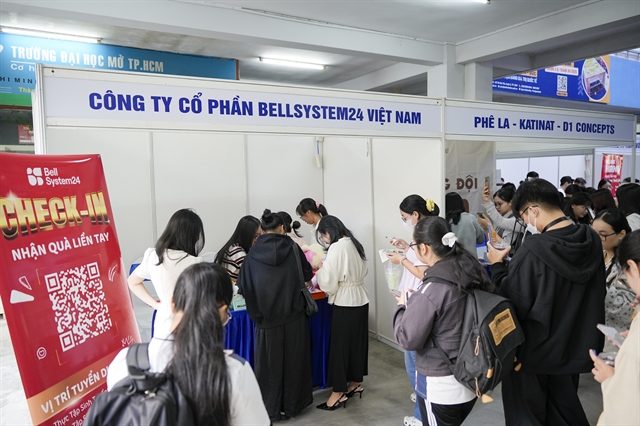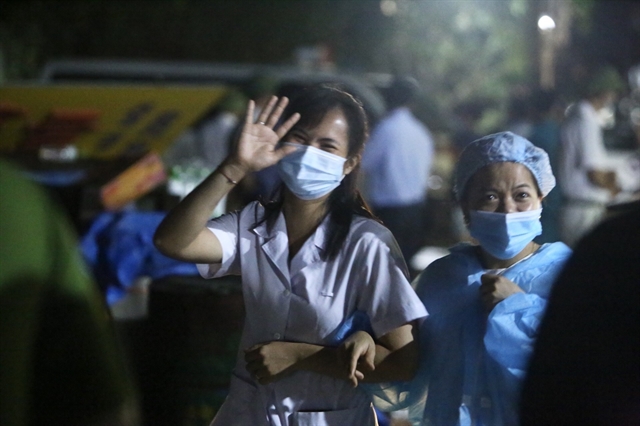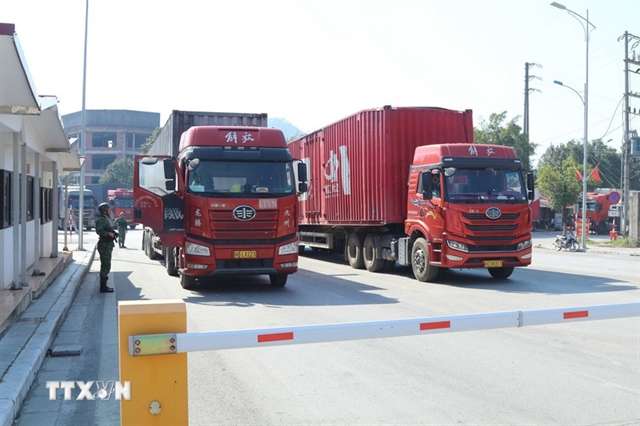 Society
Society

Việt Nam has gone 29 straight days without a new COVID-19 community infection. The country’s final COVID-19 hotspot, Đông Cứu Hamlet, Dũng Tiến Commune in Hà Nội’s Thường Tín District, had lockdown lifted at midnight on Thursday.

|
| Medical workers express their happiness when lockdown at Đông Cứu Hamlet was lifted on May 14. — VNA/VNS Photo |
HÀ NỘI — Việt Nam has gone 29 straight days without a new COVID-19 community infection. The country’s final COVID-19 hotspot, Đông Cứu Hamlet, Dũng Tiến Commune in Hà Nội’s Thường Tín District, had lockdown lifted at midnight on Thursday.
Prime Minister Nguyễn Xuân Phúc on Friday announced that Việt Nam “had gained initial success in realising the dual targets of containing the disease and promoting production and business”.
The number of community infections in the country has been contained at 140, while 172 have been imported by people returning from overseas. Among them, 260 have recovered and most importantly, there have been no deaths thus far.
The Australia-based ABC News said the reason for Việt Nam’s successful battle against COVID-19 was “strategic testing, aggressive contact tracing and effective public communications campaigns”.
Looking back over the past three months, the country has been through three phases.
On January 23, when Vietnamese people were on their Lunar New Year holiday, a Chinese father and a son entering Việt Nam from China’s epicentre Wuhan were confirmed to be the first cases.
Between then and February 25, 16 people who had contracted the disease had been successfully treated and released from hospital.
Việt Nam entered the second phase after a woman returning from Europe tested positive on March 6 in Hà Nội and spread the virus to her relatives and passengers on the same flight.
As of March 22, the number of cases had topped 100.
In most countries, the number of cases expands ten-fold within nine days, and if that had been the same for Việt Nam, the country would have recorded 1,000 cases by April 1.
Thanks to the efforts of the health sector and the whole community, the number of cases increased very slowly compared to other Southeast Asian countries, reaching only 204 by March 31.
When the first cases related to the Hà Nội-based Bạch Mai Hospital were detected, the country entered the third phase which was dubbed ‘losing F0 trace’. The Government took drastic measures to contain the outbreak and minimise the risk of transmission in the community.
Hotspots including Sơn Lôi, Hạ Lôi and Bạch Mai in Hà Nội were locked down.
The strategy of zoning off infected cases and social distancing policies which lasted 22 days interrupted the transmission chain.
The country has achieved spectacular results in the prevention and control of COVID-19 thanks to correct and consistent strategies with the motto of ‘putting people's lives and health as top priority’ and ‘fighting the pandemic like fighting the enemy'. Ninety-four million citizens have been compared to 94 million soldiers following orders to contain COVID-19 within the community.
However, Việt Nam has still been exposed to imported cases. Dozens of new cases reported over the past week have been Vietnamese people returning from overseas, and they have all been quarantined on arrival.
In the coming days, there will be more flights landing in Việt Nam carrying Vietnamese citizens home. Most of them are newborns, pregnant women, sick people and students who do not have accommodation due to dormitory closures.
Việt Nam has achieved success in pushing back community transmissions, but the community has been warned not to become complacent.
Deputy Prime Minister Vũ Đức Đam repeated many times at meetings of the National Steering Committee on COVID-19 Prevention and Control that the public should not ignore the situation because relapses had been reported, and many people were asymptomatic.
Associate Professor Nguyễn Huy Nga, former director of the General Department of Preventive Medicine, told Lao Động (Labour) newspaper that Việt Nam was not in a position to declare an end to the pandemic because the country was still exposed to transmission risks from overseas while many patients were still being treated in hospitals and there were tens of thousands of people stuck in quarantine.
Deputy Minister of Health Nguyễn Thanh Long said although the pandemic had been well controlled, Việt Nam would continue measures to stop transmissions from overseas.
Anyone returning from overseas is being quarantined on arrival for 14 days and tested for the virus twice.
COVID-19 surveillance and early detection in the community were being maintained in order to zone and stamp out the virus immediately. Medical workers at all levels must remain vigilant to respond to the pandemic when needed, he said. —VNS




